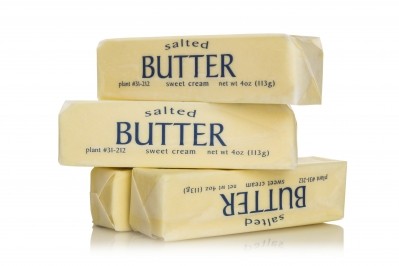Fat intake guidelines review highlights need for 'better science': NDC

Butter hit the headlines in the UK this week following the publication of a British study, which concluded that US and UK dietary guidelines on fat intake - blamed for a fall in the consumption of butter and whole milk - were introduced "in the absence of supporting evidence."
In 1973 and 1980, with the aim of reducing coronary heart disease (CHD), health authorities in the US and UK issued the recommendation that fat and saturated fat consumption be limited to 30% and 10% of total energy intake.
Researchers, led by Zoë Harcombe from the University of the West of Scotland, reviewed evidence available to authorities on both sides of the Atlantic at the time.
Published in the Open Heart journal, Harcombe and her team concluded that on the back of such evidence the UK and US fat intake guidelines "should not have been introduced."
While the British media ran with headlines such as 'Butter ISN'T bad for you after all', scores of nutrition experts took a different view of the findings.
There was little US coverage, but Greg Miller, chief science officer, NDC, was among those that took interest.
Speaking with DairyReporter.com, Miller said that while it is just "one piece of science in the total body of science available”, lessons can be taken from the conclusion of the review.
“I've seen some of the reports, and some of the criticism," he said.
“But I think the point is that we need better science before making general population recommendations.”
“They need to start thinking, ‘What are the unintended consequences of telling the population to do something.”
“Balance, variety and moderation”
The dietary guidelines on fat intake introduced in the US and UK by 1980 have, over the years, been blamed for a fall the consumption of products such as cheese, butter and whole milk.
“You can’t say it’s all based on these dietary recommendations," said Miller, "but it certainly has had an impact."
Consumption of butter and whole milk is now, however, beginning to increase, said Miller.
"We see that butter consumption is on the rise," he said. "Whole milk consumption is also increasing to an extent."
"We do see some movement by consumers in this direction. I think this is because people like the taste of these products."
For "those folks that are concerned about saturated fat" it is probably a "worrying" statistic, said Miller.
But as part of a "balanced, varied diet" there "is no problem with them," he said.
"I think people are beginning to focus on the old message of balance, variety, and moderation."
“We also understand that butter is not as bad as we once thought it was.”
"But that doesn't mean you can consume all the saturated fat you want," Miller added.













